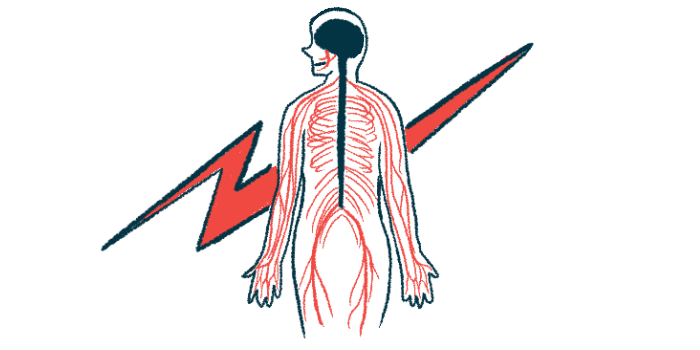Clinical trial of Scone device for overactive bladder still enrolling
Neuromodulator in 12-week study works via electrodes placed on skin of spine
Written by |

Enrollment is nearly complete in a clinical trial of the Scone neuromodulation device in treating neurogenic, or overactive, bladder due to multiple sclerosis (MS), stroke, or spinal cord injury, SpineX, its developer, announced.
Currently, 95 adult patients (more than 80% of planned total), ages 18 to 75, are taking part in the CONTINENCE study (NCT05301335) at sites in the U.S., Canada, and India. Results of the 12-week trial are expected next year.
If positive, the company plans to use trial findings to support an application to the U.S. Food and Drug Administration (FDA) requesting Scone’s approval as a de novo device, meaning that similar devices are not available.
“We truly believe Scone will transform the treatment of neurogenic bladder, providing non-invasive treatment for millions of people,” Parag Gad, SpineX’s co-founder and CEO, said in a company press release.
Overactive bladder can be a common problem for people with MS
MS is marked by inflammatory damage to the brain and spinal cord (central nervous system or CNS) that interferes with nerve cells’ ability to send electrical signals to coordinate movement and other functions. As a result, patients experience a variety of disease symptoms, ranging from walking difficulties and spasticity to chronic pain and fatigue.
Urinary incontinence, the inability to hold in urine, and similar problems due to an overactive bladder also can be common with MS, thought to impact about 80% of patients to some degree.
The nervous system normally coordinates the muscles around the bladder to control urination. But when these signals are impaired, the bladder can become overactive, causing issues such as a need to urinate frequently or urgently, waking up multiple times at night to urinate, hesitancy in starting urination, or incontinence.
Scone is designed to ease symptoms of neurogenic bladder by noninvasively delivering an electric current via hydrogel electrodes placed on the skin at specific areas along the spine, SpineX reports. As such, it is thought to modulate the CNS directly via the spinal cord to minimize bladder control issues.
Trial testing noninvasive Scone device in one hour, twice weekly sessions
In this trial, the device’s modulation is applied in twice weekly sessions each lasting one hour for 12 weeks (three months). Enrolled patients are randomly assigned to treatment with the Scone device or to a sham device in a 2:1 ratio, meaning that for every two patients using Scone, one will receive sham.
Information on contacts and study locations are available on the trial’s webpage.
Its main goal is to assess if the treatment significantly eases symptoms of neurogenic bladder using the Neurogenic Bladder Symptom Score. These scores, which range from zero (no bladder symptoms) to 74 (severe symptoms), are based on patients’ answers to a self-administered questionnaire.
Secondary measures include changes in urinary incontinence episodes and in the Patient Global Improvement Index, which rates a person’s perceived change in their condition.
“The underlying science of neuromodulation is the key to treating a huge variety of neurological conditions and we are already exploring applications for a broad group of indications,” Gad said.
According to the company, the device has the potential to reduce urinary urgency and frequency, improve the bladder’s capacity to hold urine and lessen leakage, and to restore sensation, issues that are not simultaneously addressed by approved treatments.
Scone has been designated a breakthrough device by the FDA, given to potential de novo devices and those with the potential to be better than current standard of care. The process allows for more frequent interactions with FDA officials, and accelerates the device’s regulatory review and potential approval.






